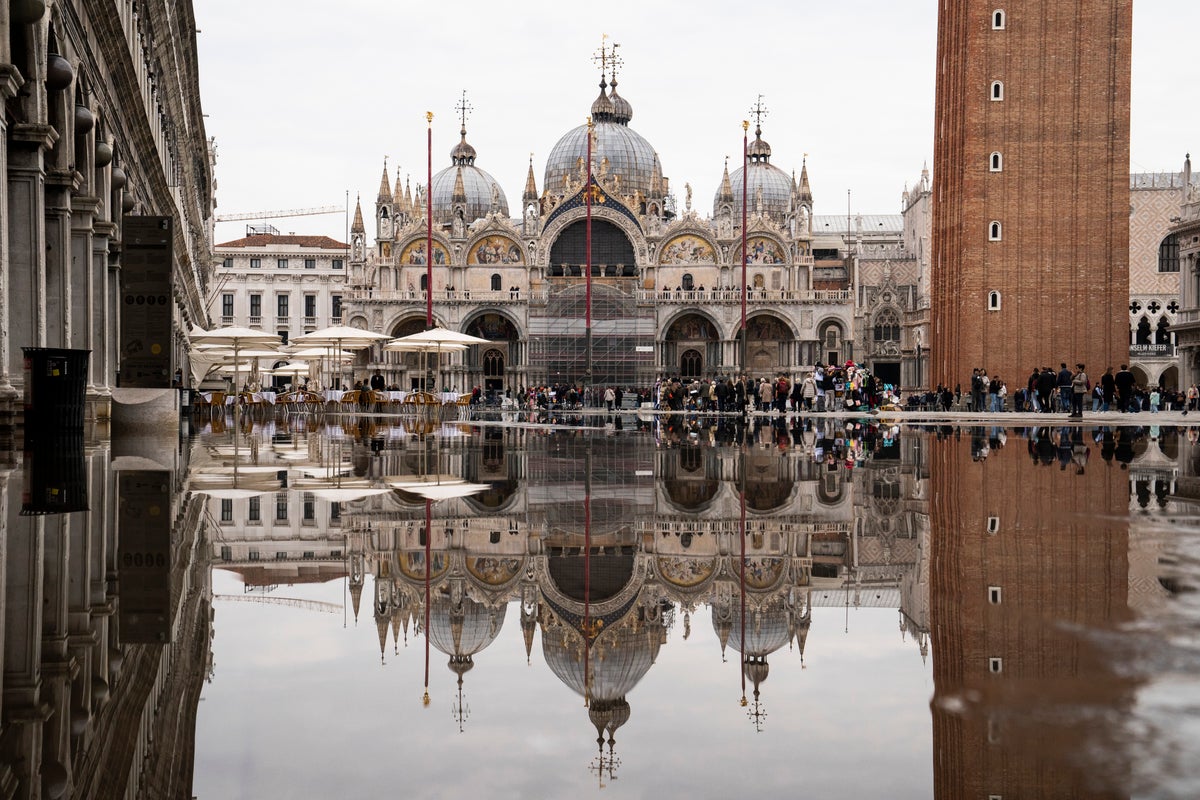
Three years ago, a historic rush of water surged into this city, inundating restaurants and churches, tossing boats onto streets, and leaving Venetians distressed about a future with ever more extreme events. But this past week, one of those events arrived – a tide nearly as large as 2019’s – and residents barely noticed, aside from some wind and rain. The city was spared from disaster.
That’s because of a €5.7bn engineering project designed to protect Venice from mass flooding and the exhausting cycle of cleanup and recovery. The lagoon city’s inlets are now guarded by 78 rectangular metal barriers, each the height of a five-story building, that are pumped with air and raised from the sea floor any time high waters threaten it.
It’s a landmark climate change solution, one requiring 30 years of planning and 20 years of construction, that has reduced fears of Venice turning into a modern-day Atlantis.
“A great satisfaction,” says Giovanni Zarotti, the technical director for the Consorzio Venezia Nuova, a consortium of construction companies that operates the barrier system. “Because we have in our hands the fate of something priceless.”
But for one of the world’s most fragile cities, there is a difference between being protected and being saved.
The system that safeguards Venice could become stressed with even a 30cm sea-level rise, its operator says – something that middle-of-the-road projections indicate could come by mid-century. With luck, and if major nations dramatically cut back emissions, the Mose, as the system is known, could yet work for 100 years as designed, scientists say. But more dire scenarios would trim the system’s life span by decades.
The result is that a just-reinforced city remains vulnerable in the longer term.
“50 years, 100 years – somewhere between those two dates,” says Pierpaolo Campostrini, the director of a research consortium that studies the Venetian lagoon. “That doesn’t mean the Mose is not useful. But we know it’s temporary.”
Many low-lying and jeopardised parts of the world don’t have the resources to properly defend themselves against rising seas, flooding and other extreme events. But Venice’s experience shows the challenges of adaptation even when little expense is spared. Italy has made it a national mission to safeguard Venice, a maze of Middle-Ages treasure built improbably over 118 islands. Although some of the project’s difficulties have been specific – a corruption scandal in 2014 led to a wave of arrests and personnel changes – one of the lessons is more universal: it’s hard to aim a big, slow project at faster-moving science.
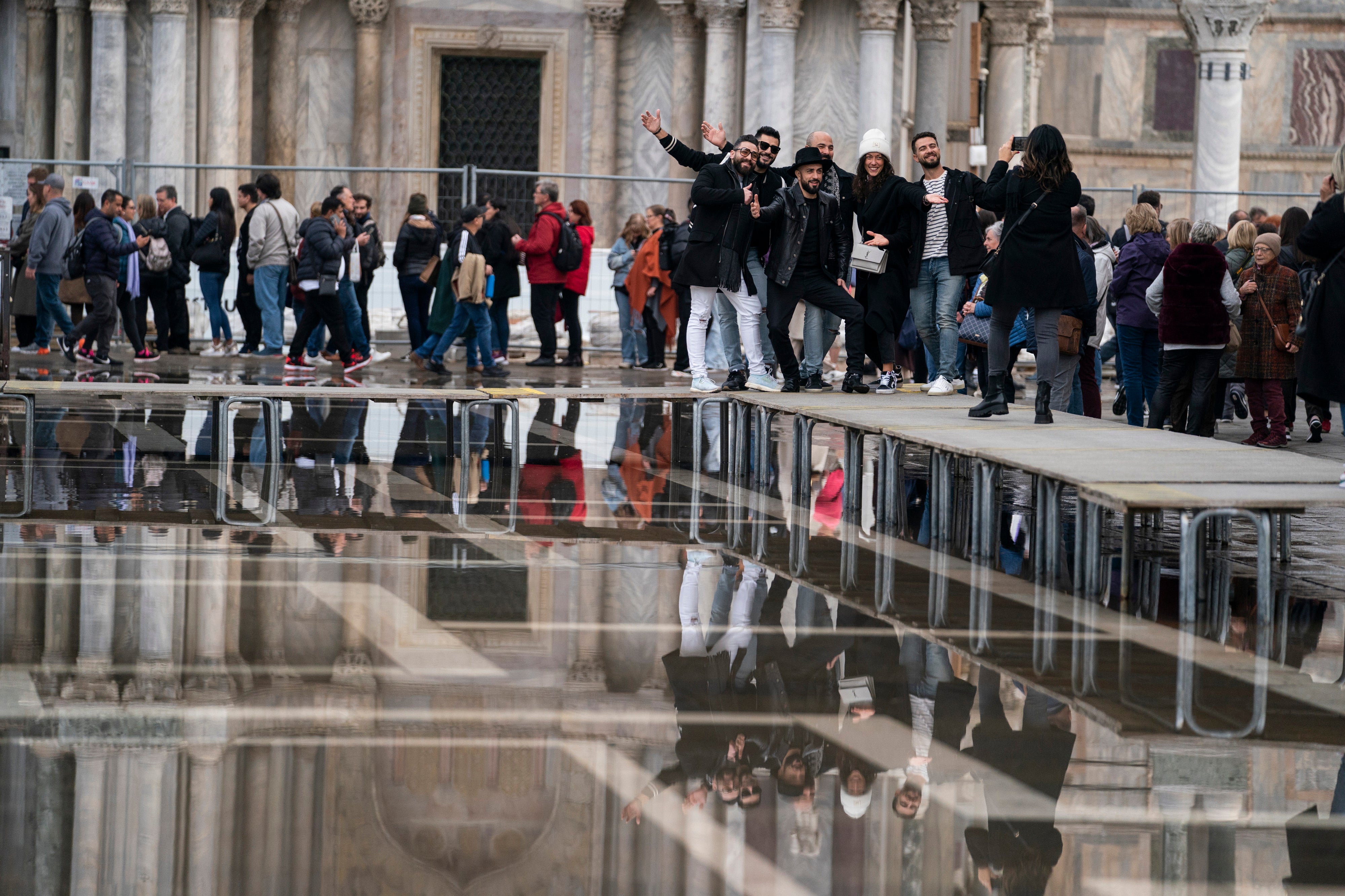
Viewed up close, the scale of the Mose is stunning. The yellow barriers, end-to-end, span nearly a mile and are operated in part from an artificial island that workers liken to a concrete fortress. A day-long tour included a walk through underwater tunnels used for maintenance and inspection – a hidden world of air compression pipes and dials just three miles from the campanile and cupolas of old Venice.
“It’s definitely unique,” Zarotti says.
In contrast with the permanently visible dams and dikes constructed in places such as the Netherlands, the raisable gates of the Mose are hidden away on the sea floor. That allows the lagoon on most days to operate as normal. Ships can come and go. And crucially, so can the tides, with saltwater from the Adriatic helping to flush out the lagoon and prevent it from becoming a fetid petri dish.
But there is a downside to the project’s inherent concept, which was finalised in the 1990s, an early age of climate science: it was designed to be used infrequently. Eventually, rising seas will force the Mose to operate so regularly that it becomes a semi-permanent seal, altering the lagoon’s environment, preventing the flow of marine traffic, and straining the system itself, which needs regular maintenance. The only question, among operators and scientists, is when that tipping point will come.
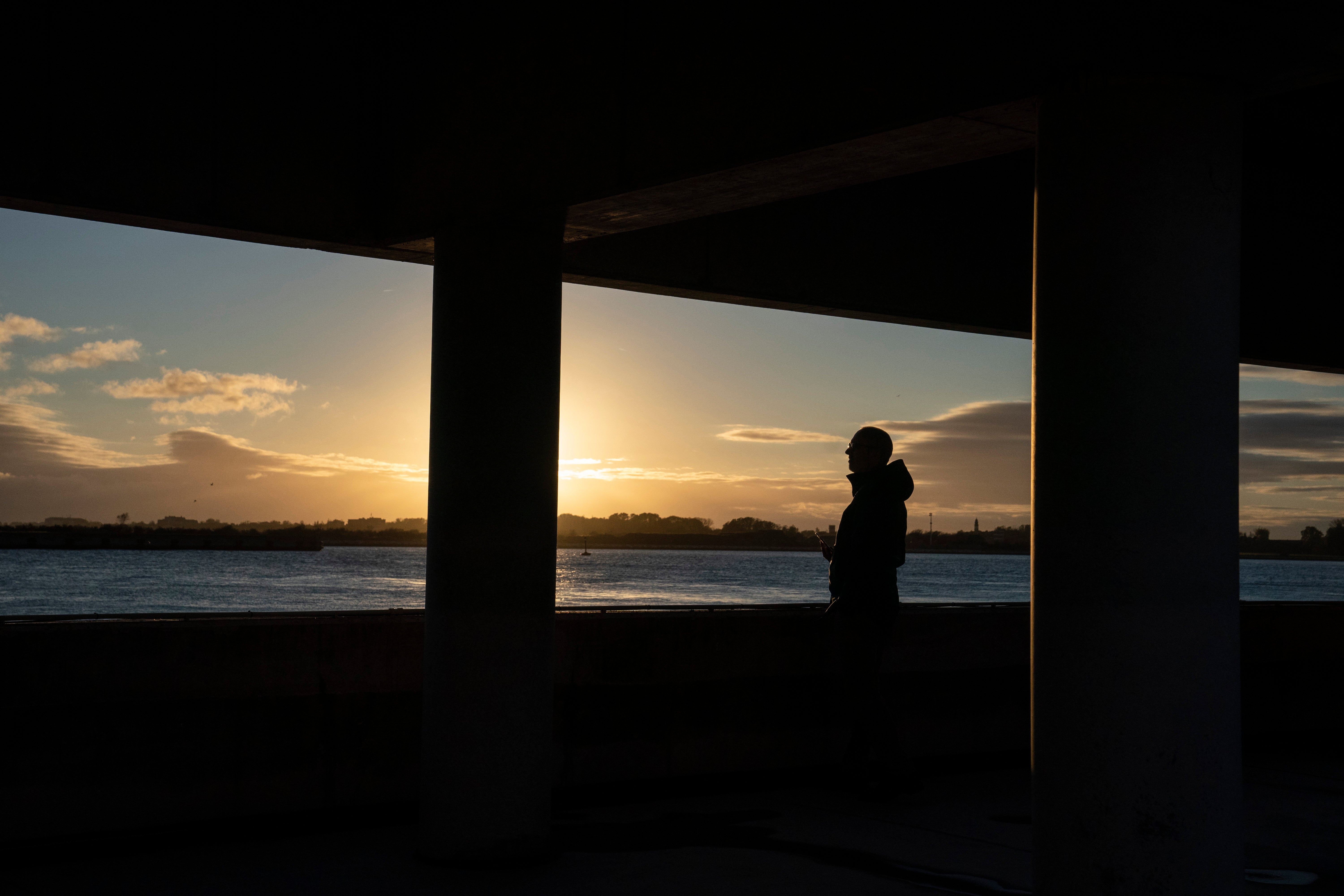
For now, the Mose is being used only sparingly, usually in the winter, when higher winds tend to build storm surges across the Adriatic. Each use costs roughly €300,000, with workers dispatched to the artificial island, as patrol boats cordon off maritime traffic.
But if the seas rise even 30cm, the Mose would be raised one day in every three or four. Zarotti says that would stress the system, making it hard to perform maintenance and interfering with maritime traffic. Asked if the Mose would be sustainable at a 30cm rise, he says: “The way I see it, no.”
And if seas rise 60cm – a scenario that’s well within play for 2100 – the Mose would be used up to 500 times per year. More dire projections for 2100 suggest a sea rise beyond 1m. By then, the lagoon would be closed essentially year-round.
Alberto Scotti, the engineer who is often described as the father of the project, said the Mose could be stretched to operate with a 60cm rise, but it would require some novel steps – such as raising some barriers but not all, sacrificing a degree of protection to allow the lagoon to more regularly breathe.
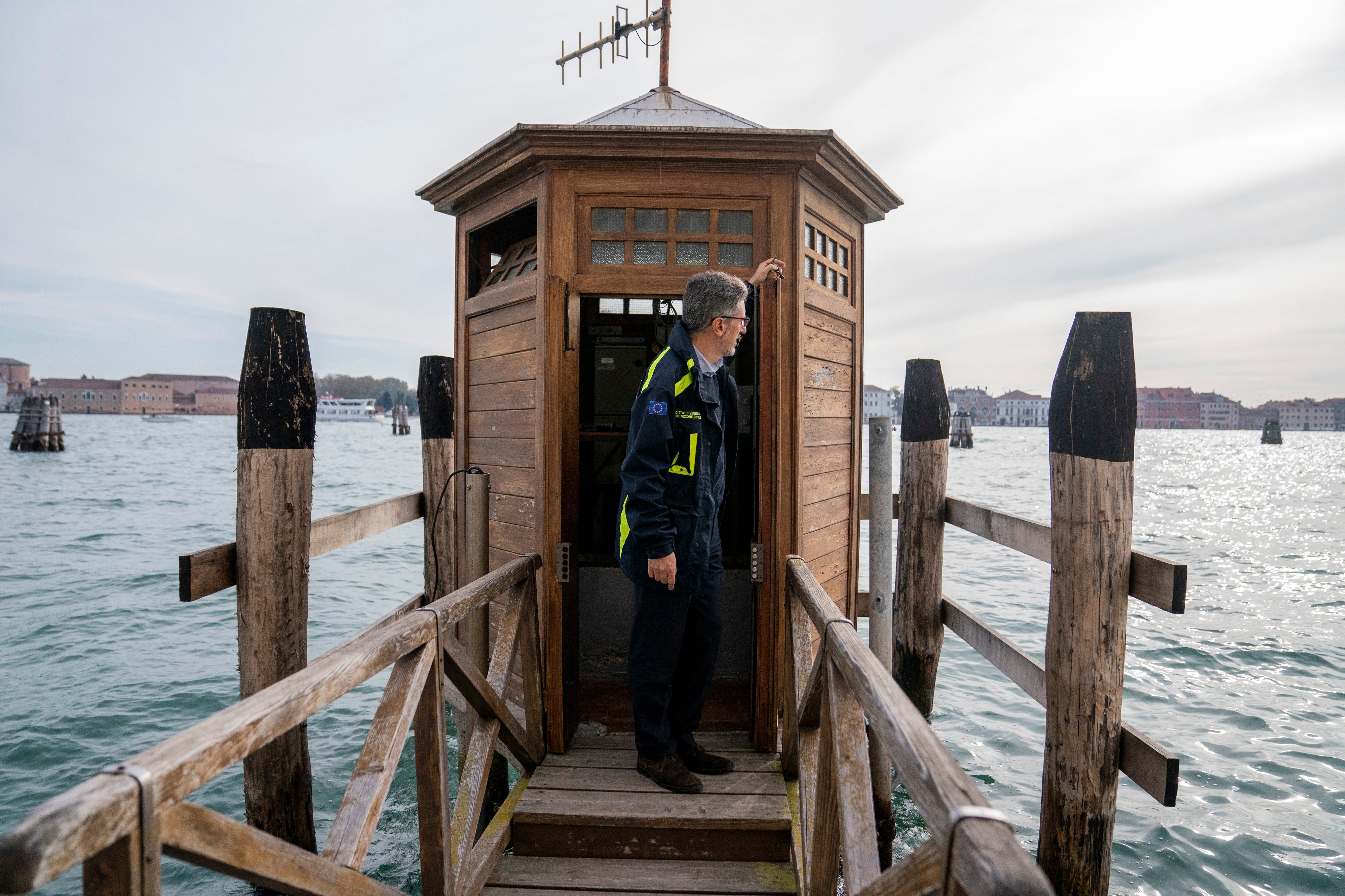
Another step, he says, would involve increasing the threshold for when the system is deployed. In other words: Venice would need to acquiesce to low-level inundation.
“Today nobody can accept the idea of a few centimetres of flooding after spending so much money,” Scotti says. “But in the future? By then, other cities along the Adriatic will have already been lost.”
In so many instances throughout history, Venice has found ways to defy its precarious environment. The earliest engineers figured out how to construct buildings on mud flats, using wooden posts as foundations. Experts during the Renaissance orchestrated a monumental plan to divert rivers that were spilling sediment into the lagoon and risked turning water into land. Three centuries ago, workers built up barrier islands with impermeable rocks, improving them as natural storm walls.
But Venice’s margins for survival have gotten narrower.
Compared with 150 years ago, the average water level is 32cm higher. That’s partly because of melting ice sheets and rising oceans. But it’s also because of a catastrophic decision in the 1950s and 1960s, in which groundwater was pumped from underground aquifers for industrial purposes – a move that caused Venice to sink roughly 12cm.
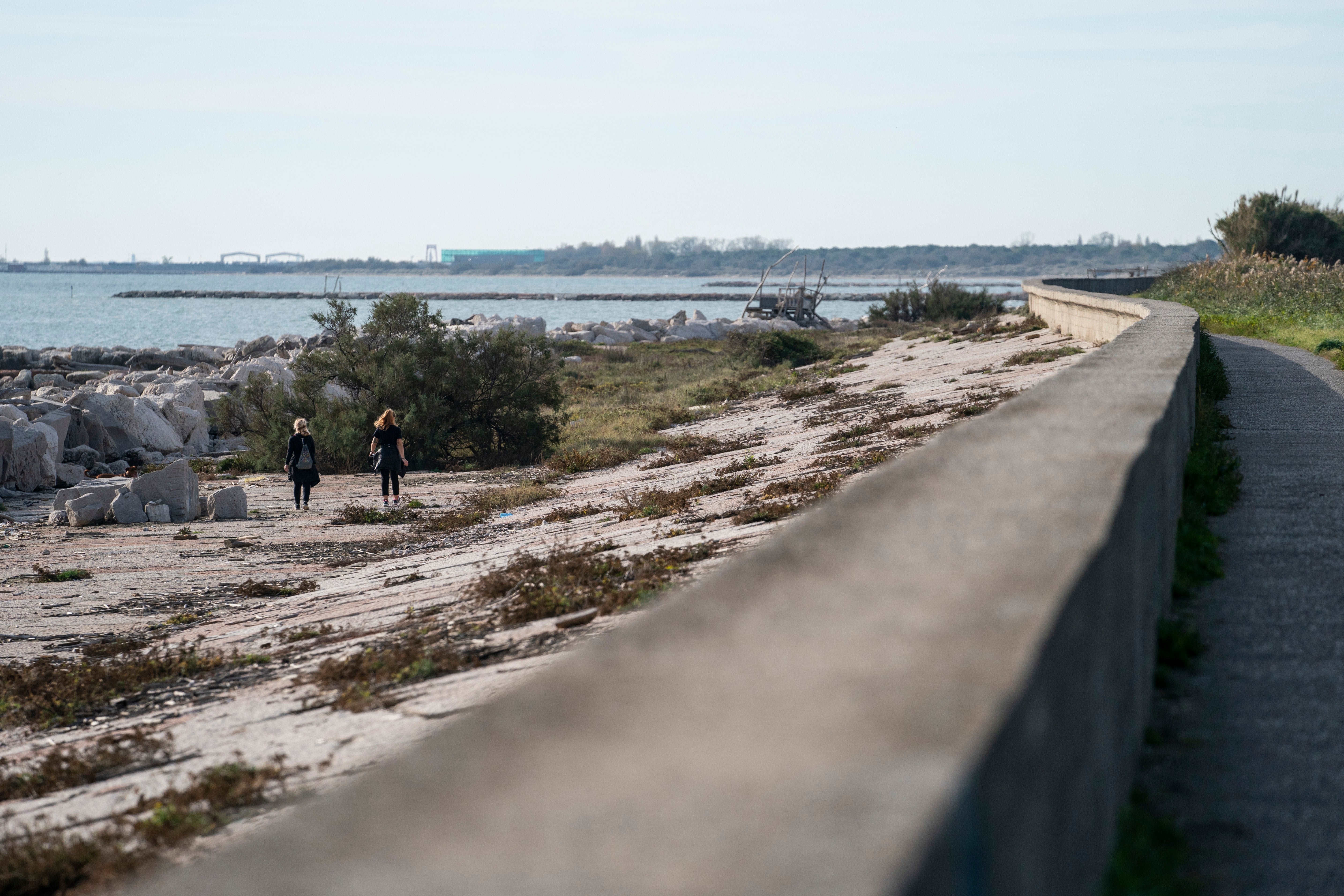
In a city so close to sea level, those centimetres matter profoundly.
Before the introduction of the Mose, the once-per-decade floods of a century ago had begun to happen four times per year. Of the city’s 20 biggest recorded high-water events, 11 occurred since 2000.
The iconic Piazza San Marco, ringed by the Gothic Doge’s palace and a gilded basilica dating back to 1063, rarely took on water through most of its history. Now, even with the MOSE activated on the most extreme days, the piazza – which also happens to be Venice’s lowest-lying point – floods about 100 days per year.
“You no longer need exceptional weather to cause this,” says Alvise Papa, the director of Venice’s weather prediction service.
As Papa walks into the piazza during the high tide of midmorning, seagulls lap up water, and little lakes spread around the legs of outdoor cafe tables. Tourists walk in tight lines along high-rise planks, while a few, in waders, pose for photos.

By design, flooding is tolerated in up to 12 per cent of the city. The Mose is intended to kick in on days the water is forecast to top 110cm above “level zero” – the mean level from the late 1800s, when Venice first started keeping records.
“At 75cm the flooding starts in the piazza and by 95 everything is covered,” Papa says.
Smartphone apps, using his centre’s data, showed high water marks for each of the next few days.
On this day: 90cm.
The following day: 95.
The little inundations, ebbing as the tide recedes, do little to disrupt life in the city. But they are damaging nonetheless, leaving behind salt crystals that can devastate the ancient buildings. Mario Piana, the restoration expert in charge of Basilica di San Marco, describes a treasure that has been ageing at super-speed, with accumulated salt breaking down plaster, chipping away at walls and damaging mosaics and irreplaceable marbles from Byzantium.
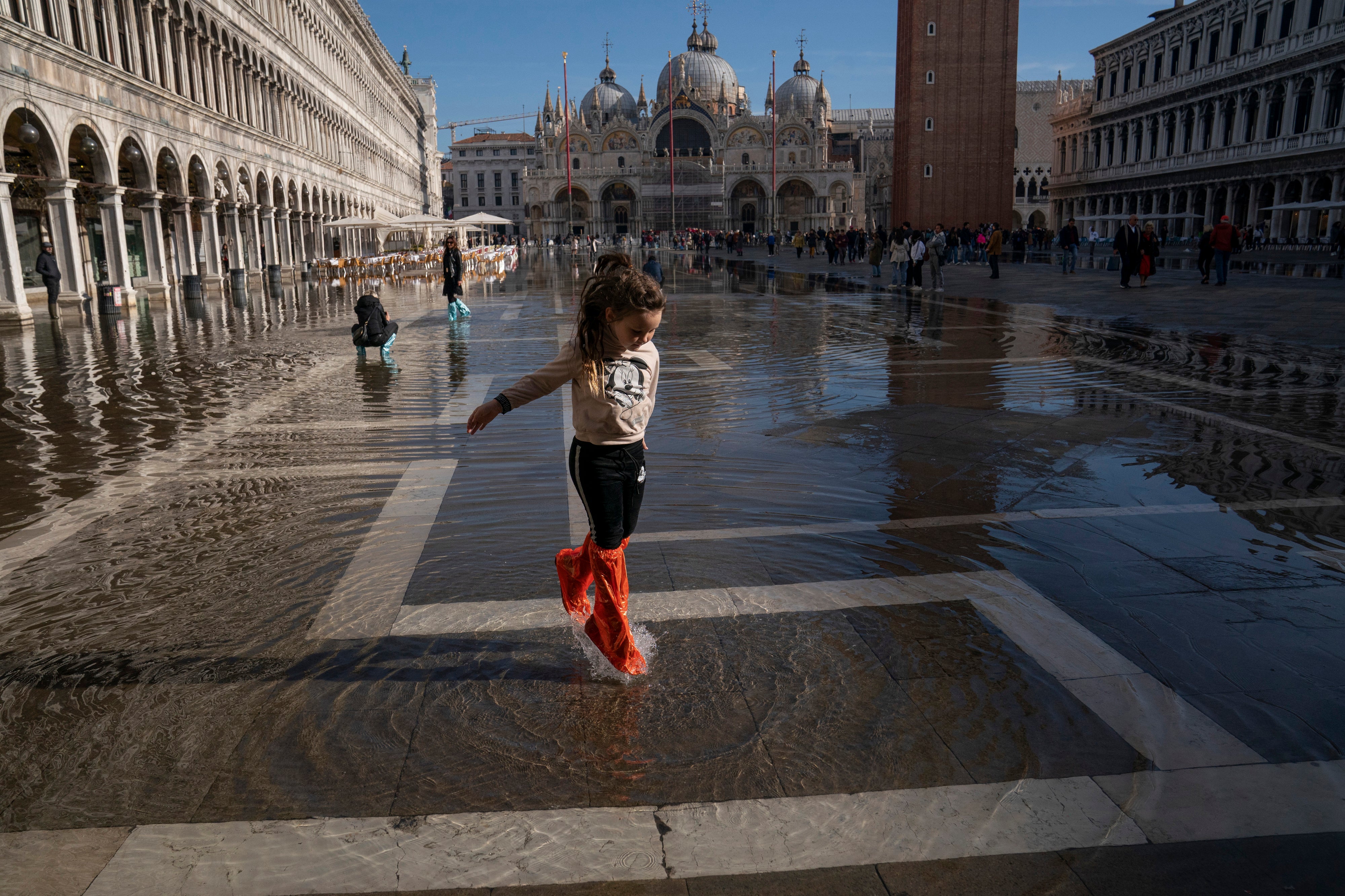
With the barriers only used for higher-water events, the basilica was recently forced to build protection of its own: its exterior is now fenced off by a glass barrier, reaching chest height, and extending 2m underground. Water in the piazza now stops at the basilica doors.
There are other projects, too – many completed, some not – designed to supplement the Mose. The Consorzio Venezia Nuova has worked to restore salt marshes and strengthen the barrier islands, adding new sand formations and breakwaters. In much of the city, the pavement has been raised to 110cm, the Mose activation level. Soon, workers will begin similar elevation work in Piazza San Marco.
But those are relatively modest projects.
Scientists and other experts on the lagoon say the Mose has forestalled serious exploration of bigger ideas.
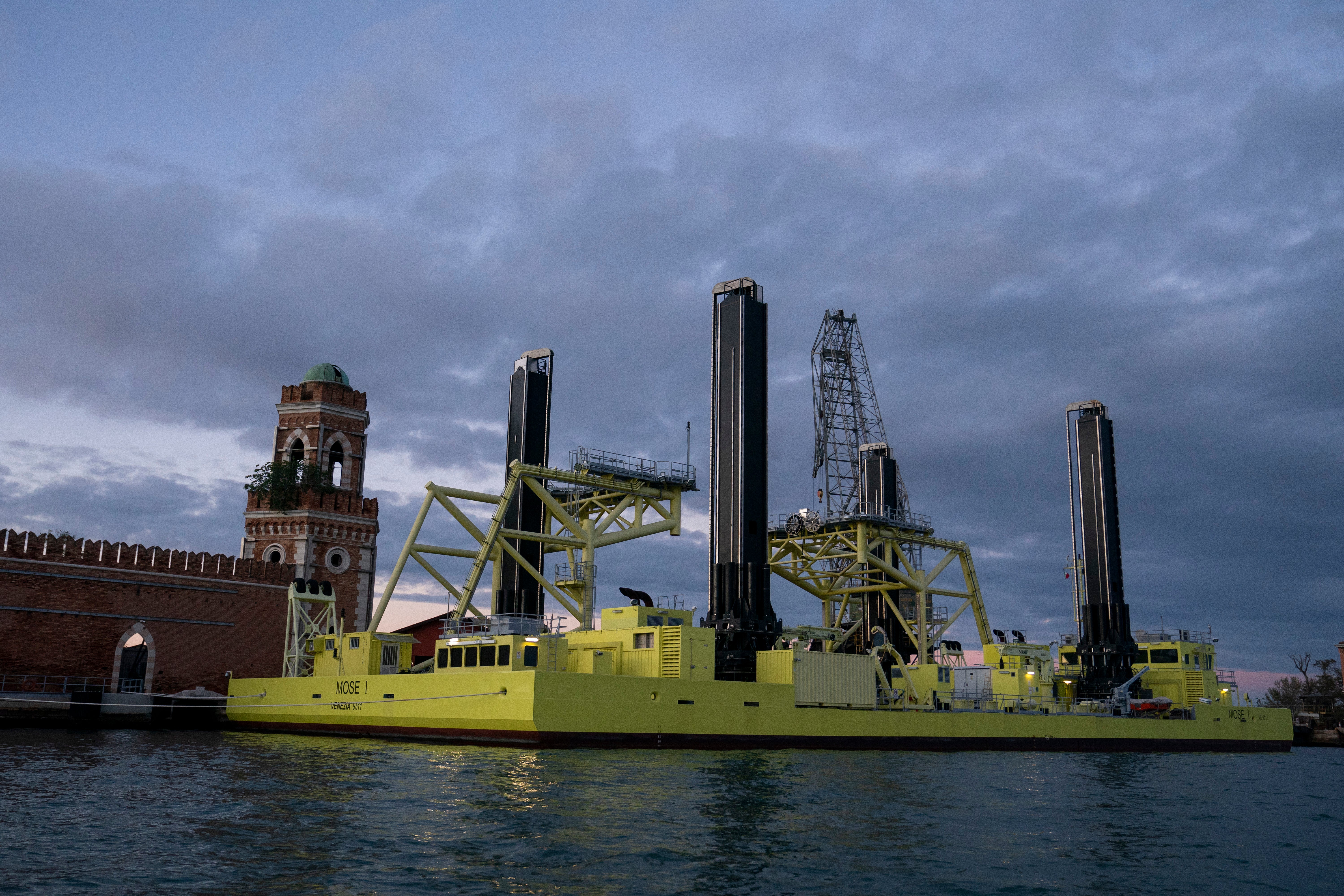
“Whatever was seen as an alternative to the Mose – cancelled!” Campostrini says. “Officials always said: let’s finish the Mose first. Then think about what comes next.”
Even now, the Mose is not technically finished. It has been operating for two years in experimental mode. Engineers say they are still completing the last backup systems. The project is expected to be officially wrapped up next year.
But given the potential limits on its life span, some experts say it’s already necessary to begin considering successor solutions.
Among the long-term proposals, the most prominent calls for the injection of seawater into aquifers deep underground. Such injections, performed at various boreholes that would be created throughout town, could raise Venice some 20 to 25cm – in effect wiping away 150 years of sinking and sea change, says Pietro Teatini, one of the hydraulic engineers behind the idea.
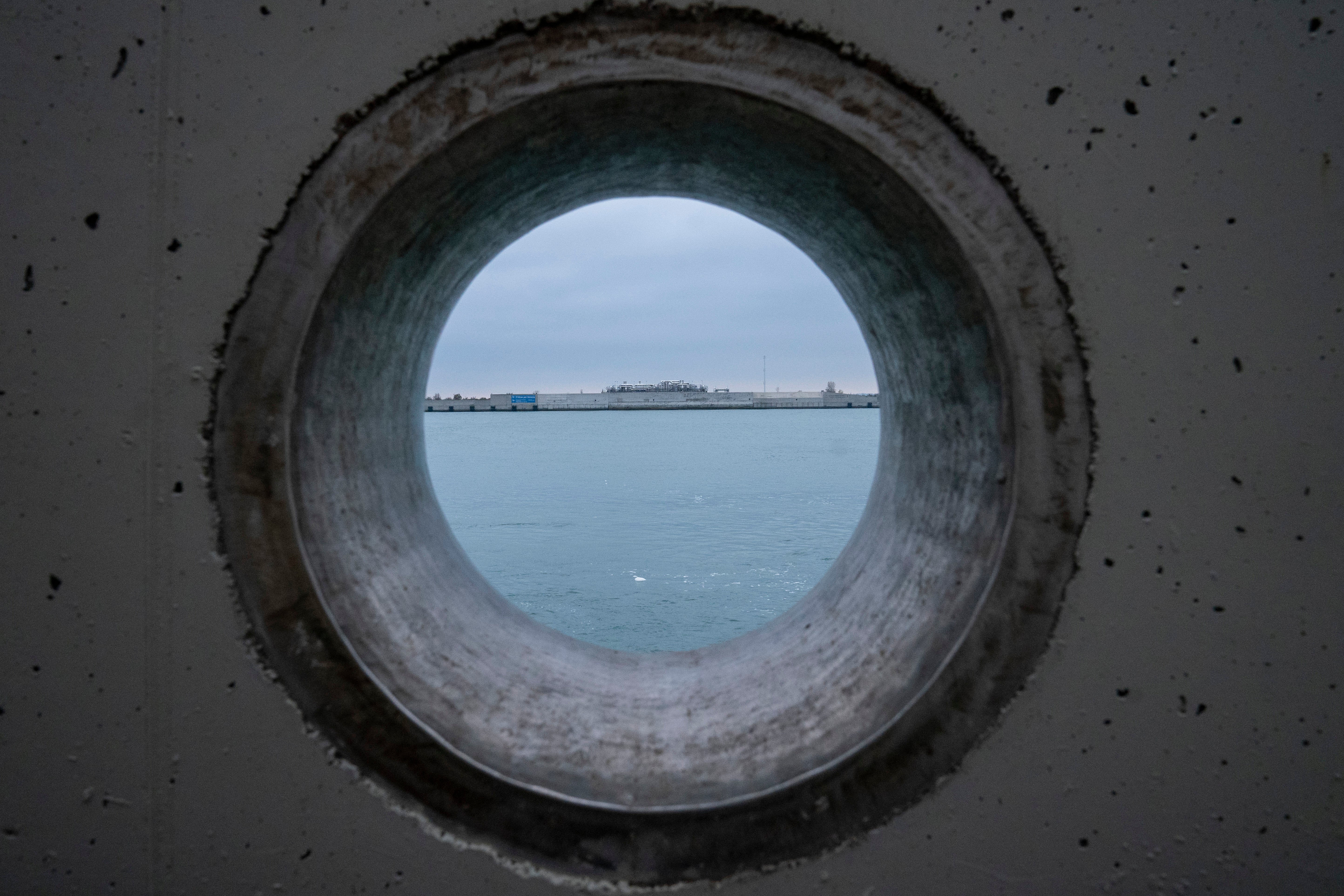
Similar injections have been used by energy companies for gas storage, and to help mitigate sinking or otherwise raise land under population centres such as Tokyo and Taipei.
Scientists who spoke to us were highly divided about the idea for Venice. One called it “terrible” and worried about how the city’s surface could be raised evenly. Yet others said the idea might work. Testing would first need to be performed on a small scale.
“We presented the idea – I really don’t remember, 15 years ago,” Teatini says. “What happened? They said, okay, seems good, but please wait. The official [government] answer was: wait.”
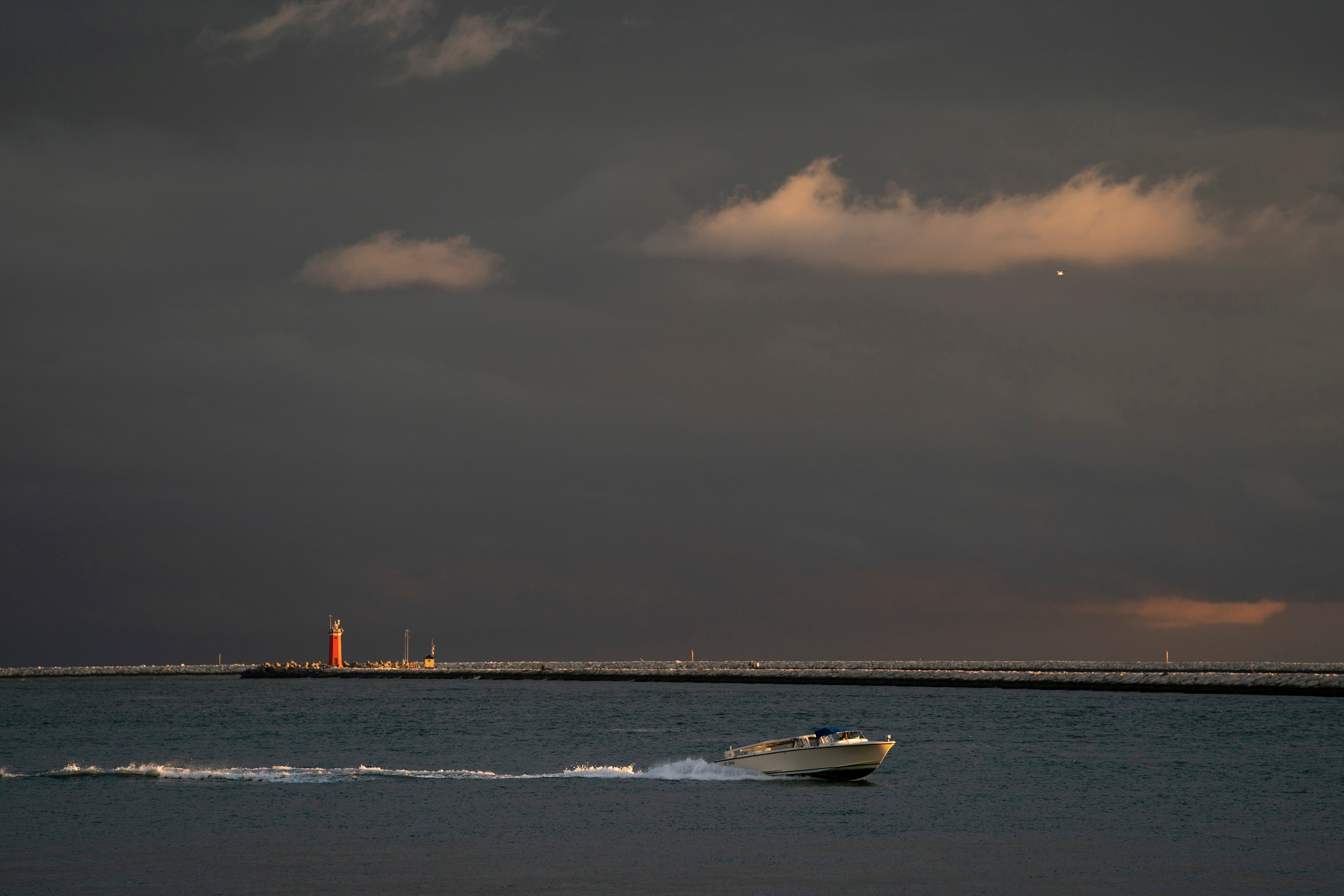
Such a system, if it ever came to pass, could work in tandem with the Mose. But Georg Umgiesser, an oceanographer who has spent 40 years modelling the rising waters of the lagoon, says he anticipates that Venice will be eventually forced into a cruder method to block the seas: a permanent wall. When delivering seminars to students or at scientific conferences, he includes a slide saying that it’s not a matter of if, but when.
A sea wall would transform the lagoon in ways Venetians have been adamantly against. The waters around the city would turn into a brackish lake. Fishing habitats would be jeopardised. So would the entranceways to ports. The city would need to find a new way to keep the water clean.
Umgiesser, the director of CNR-Ismar, an Italian national research council, says that “nobody wants to hear about this idea right now.”
Maybe, he says, some yet-unknown technology can stave off what he feels is inevitable.
Barring that, he says, “there will be no other idea that can save Venice.”
“The Mose buys us time,” he says.
© The Washington Post







